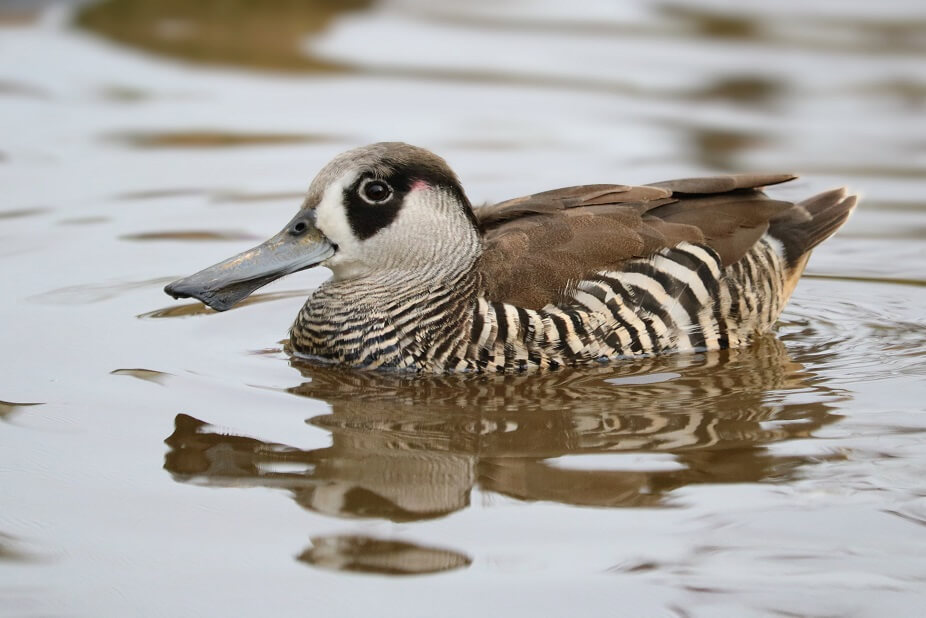Pink-eared Duck

Scientific Name
Malacorhynchus membranaceus
Alternative Names
Pink-eared Duck, Zebra Duck (rarely used), New Holland Duck (historical name)
Measurements
| Feature | Male | Female |
|---|---|---|
| Length | 38–40 cm (15–16 in) | 38–40 cm (15–16 in) |
| Weight | Not well documented | Not well documented |
| Wingspan | Not well documented | Not well documented |
Status
A native Australian species that is still common in many areas. It is not considered globally threatened but depends on suitable water conditions to breed.
Identification
A small duck with a large spatula-shaped bill. It has a white face with bold black eye patches, black-and-white barred sides, and a brown crown and back. A tiny pink spot near the ear gives the bird its name, though it is only seen up close. Both sexes look similar.
Voice
Soft, high-pitched whistles and quacks. Generally quiet unless in groups or during courtship.
Diet
Feeds mainly on plankton, algae, tiny crustaceans, insects, and other small aquatic life. Uses its wide bill to filter food from the water. Sometimes feeds by spinning in pairs to stir up food (called vortexing).
Distribution
Found across most of Australia. Moves widely depending on water availability and often appears in temporary wetlands after flooding.
Habitat
Prefers shallow freshwater lakes, floodplains, swamps, and temporary pools. Often found in dry inland regions when water becomes available.
Breeding
Breeding depends on rainfall and flooding. Nests in tree hollows or in dense vegetation near water. Lays 6–10 eggs. If conditions are poor, they may skip breeding completely.
Wintering
Highly mobile rather than migratory. Moves to areas with available water and food during dry seasons.
Conservation
Not currently endangered, but depends on healthy wetland systems. Duck hunting is legal in most Australian states except Tasmania. Some birds suffer injuries from lead shot, raising concerns from animal welfare groups.
